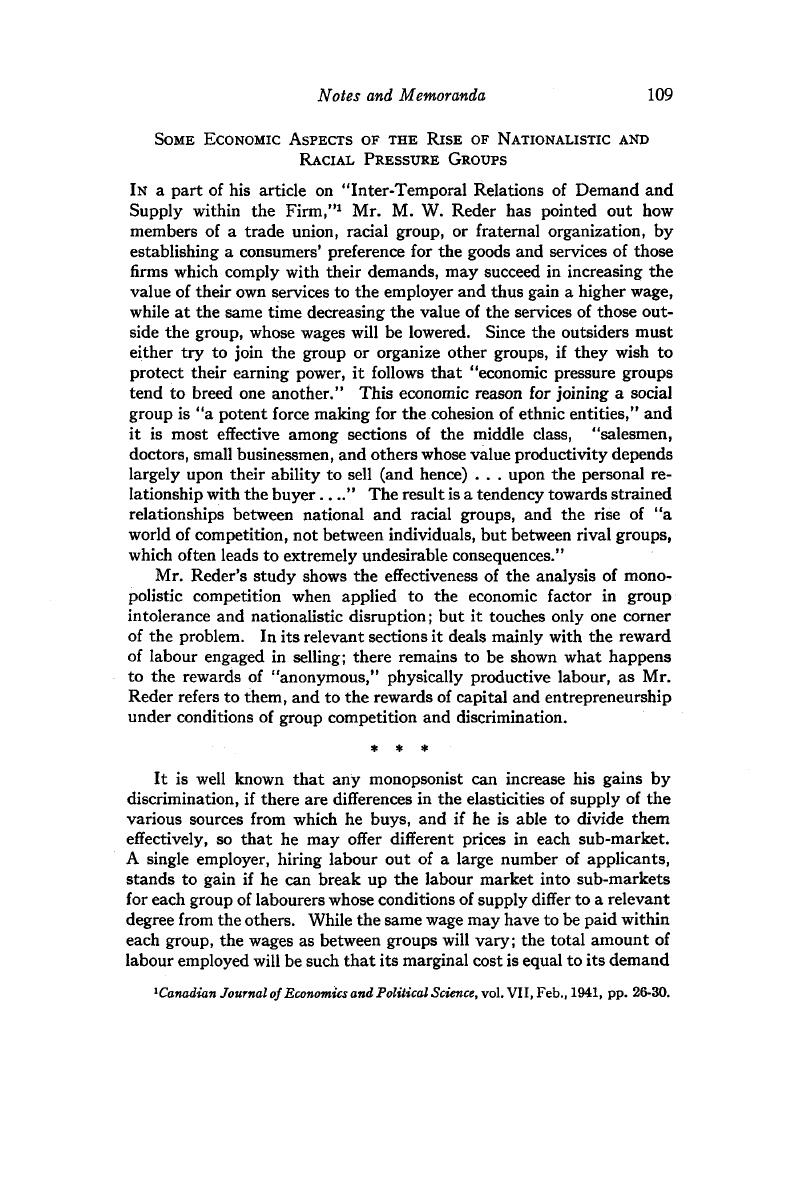No CrossRef data available.
Published online by Cambridge University Press: 07 November 2014

1 Canadian Journal of Economics and Political Science, vol. VII, 02, 1941, pp. 26–30.Google Scholar
2 Robinson, Joan, The Economics of Imperfect Competition (ed. 3, London, 1936), pp. 302–3, and Fig. 80.Google Scholar
3 Ibid., pp. 224-5. It is assumed that the supply curve from each source is rising (ibid., note 1, with further details).
4 McWilliams, Carey, Factories in the Field (Boston, 1939), p. 118.Google Scholar
5 Ibid., especially chap, VII, “Our Oriental Agriculture,” pp. 103-33.
6 Robinson, , Economics of Imperfect Competition, p. 302, note 1.Google Scholar
7 Chamberlin, E. H., The Theory of Monopolistic Competition (Cambridge, Mass., 1933)Google Scholar; and Nichol, A. J., “Prof. Chamberlin's Theory of Limited Competition” (Quarterly Journal of Economics, vol. XLVIII, 02, 1934, pp. 317–37).CrossRefGoogle Scholar Mr. Nichol also points out a modification in the case of equal but decreasing costs, where the oligopoly price will be higher than the monopoly figure as each oligopolist is producing his share of the aggregate output further up and to the left on the declining cost curve than a single monopolist (ibid., pp. 319-25). An oligopoly price higher than the monopoly figure is already implied, however, in Professor Chamberlin's chapter on product differentiation, where also the falling parts of U-shaped cost curves are considered.
8 The practice of discrimination against any group, for whatever emotional, political, or historical reasons, will already in itself tend to impoverish the disfavoured group, and thereby render its supply of labour less elastic. Thus it is possible for the relationship to be reversed time and again, and the economics of discrimination may work with equal efficacy against the favoured group or nationality of yesterday—a process several instances of which can be found in the Central Europe of the last two generations.
9 The larger the difference in costs, or supply conditions, between any two sources of goods or services, the wider apart is the optimum price and output of each from that of the others, and the more difficult will it be to establish or maintain any explicit or tacit oligopolistic agreement between them. A common high wage level might penalize the low-cost source by an unnecessarily high share of unemployment. Free competition between independently organized sources would tend to bring the price nearer towards the oligopoly figure of the lowest-cost group, and hence injure the high-cost or highstandard source. The latter might stand to gain from a revival of discrimination.
10 A case where the favoured group (men) are organized, while the disfavoured group (women) are not, is illustrated in Robinson, , Economics of Imperfect Competition, pp. 304–5, Fig. 81.Google Scholar
11 Cf. Ohlin, Bertil, Interregional and International Trade (Cambridge, Mass., 1933), pp. 71–2, 348–9.Google Scholar